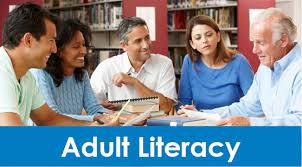Education Functions in relation to whole social milieu. Therefore its activities cannot be limited to providing only the background knowledge in the form of formal education alone. The one-school education constitutes an essential part of -the total education. In a developing country like ours even the willing and deserving-young boys and girls are not able to get school education due to strong economic and social constraints.
The idea of adult education therefore, is conceived to supplement the formal schooling by independent efforts in the later years of life. This problem has been engaging the attention of a large number of countries. It includes the variety of needs and objectives of the people-educational as well as economic, social and cultural. The Adult Education Committee of Great Britain defines adult education to mean all the deliberate efforts by which men and women attempt to satisfy their thirst for knowledge, to equip themselves for their responsibilities as citizens find opportunities, for self expression.
The American Association for Adult Education mentions that the aim of adult education is to inspire grown ups to be something more than they are now and to go their work better than they do it now. Its beginning is wherever one finds oneself it ends only when ambition ceases to function. At its best it leads to richness of life, appreciation of what offers, greater satisfaction in the use of mind and body and better understanding of rights and duties of one’s fellow men.
In Denmark adult education means folk schools. It may be concluded therefore that it is a help to man and woman to: grow by themselves in life by acquiring knowledge and understanding new skills and altitudes towards various things arid objects. It is a voluntary work channelizing the energy of the people after formal school to creative work and harnessing their leisure tune usefully. It is non-compulsory as much as it can be accepted or rejected.
In Russia too, this problem was quite alarming. At the time of the great October Socialist Revolution, the three quarters of the population were illiterate and in the county side, illiteracy was even more rampant. So in December 1919 Lenin signed a decree by which entire illiterate population, in the age group of 8-50 years was obliged to study either Russian or any other native language. The Young Communist League started a movement “Likbez” (finish illiteracy) to combat illiteracy on war footing, hi 1928 about one lakh persons were deputed to the countryside to spread literacy. Adult Schools were set up. Similarly preparatory courses were introduced on the national basis, to prepare the working people for enrollment at institutes of higher learning. A four year elementary school education course ‘as adopted throughout the country. By 1934 compulsory seven year education was introduced in the cities making provisions, for the training of the teachers. The “work and study”, programme attracted the entire youth community of the Soviet Union, Within a short span of 20 years the country made a remarkable progress and 1939 census of the country recorded 8 1 per cent of the population between the age of 9 years and above had become literate. Now the country has cent per cent literacy.
In 1951, only 16.6 per cent of the population in Pakistan could read and write. The percentage went up to 29.45 in 1981. As still two third of the population is illiterate the government has given the highest priority to the National Adult Education programme. The programme envisages that 3:10 million illiterates in age group of 15-35 years should be made literate in the next eight years.
Literacy is essential for keeping our democracy alive. The entire population cannot participate actively in the political life of the country till literacy is prevalent among them. Literacy is a precondition for individual growth to give expression to inner urges for better social status, improved citizenship and enriched life.









0 comments:
Post a Comment